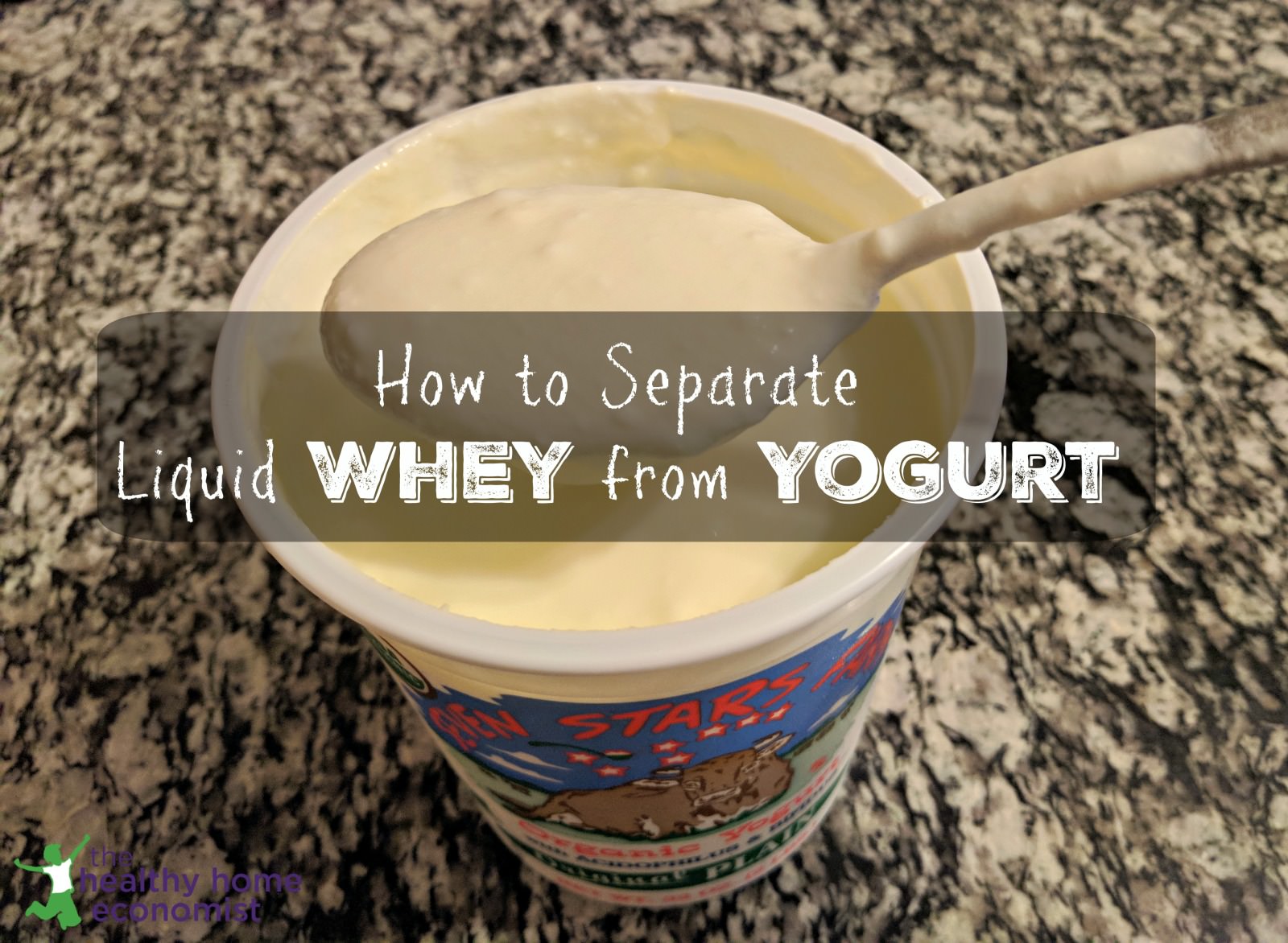Table of Contents[Hide][Show]
 Whey in its liquid and whole food form is the ideal starter for probiotic-rich, health-enhancing fermented foods and drinks.
Whey in its liquid and whole food form is the ideal starter for probiotic-rich, health-enhancing fermented foods and drinks.
Liquid whey is most easily and economically obtained from soured raw milk also called clabbered milk.
Clabbered milk is a very useful item for the traditionally minded cook and has the consistency and taste of drinkable style yogurt.
Unfortunately, not everyone has access to raw milk which may seem to preclude the use of unprocessed, liquid whey for fermentation purposes as it is not commercially available.
The good news is that you can easily extract whey from plain yogurt from the store. Using homemade yogurt is even better. You may use Greek yogurt too although you won’t get as much whey from the effort. This is due to the nutritional differences of Greek yogurt vs regular yogurt.
Powdered Whey No Substitute for the Real Thing
Please note that powdered whey is never an adequate substitute for whole, unprocessed, liquid whey. To gain the benefits of whey, it must be gently separated from a fermented dairy product like clabbered milk, kefir, or yogurt.
Drying and powderizing whey even at low temperatures denature the delicate proteins. It also eliminates the beneficial probiotic and enzymatic properties.
Uses for Liquid Whey
Liquid whey is an important ingredient in homemade baby formula recipes. In addition, it is indispensable as an inoculant for fermented foods and drinks. Unprocessed liquid whey is also wonderful to mix with filtered water and a little orange juice for a healthy sports drink naturally loaded with electrolytes.
How to Separate Whey from Yogurt (or Kefir)
The easy recipe below will result in a jar of beautiful raw whey within minutes! You won’t believe how easy it is! I recommend that you do not use Greek yogurt, as it contains significantly less whey than regular yogurt.
I also recommend that you stick with quality yogurt brands as there is quite a bit of variation within the industry.

How to Separate Whey from Yogurt
Simple how-to for separating whey from yogurt or kefir. Homemade or store bought brands may be used including whole, lowfat, and no fat versions. Whole yogurt is recommended, however.
Ingredients
- 1 quart plain yogurt kefir may be substituted
- 1 large glass bowl
- 1 fine mesh cheese cloth
- 1 large rubber band
Instructions
-
Line bowl with cheesecloth. Spoon in the container of yogurt.
-
Gather up the ends of the cheesecloth and secure with the rubber band. Attach the rubber band to a knob on one of your upper kitchen cabinets. Keep the bowl beneath to catch the dripping whey.
-
Leave dripping on the counter for about 1 hour.
-
Remove drip bag from the kitchen knob and place in a clean bowl. Unfasten the rubber band and scrape out the yogurt cheese within the cheesecloth into a container. Seal the lid and refrigerate.
-
Pour the liquid whey in the first bowl into a glass mason jar and secure the lid. Refrigerate. It will stay fresh for several months.
Separating Whey from Yogurt (Video Tutorial)
In the video below, I show you the very easy process for obtaining whey in its liquid, whole food form from a quart of plain yogurt. I also discuss what to do with the leftover yogurt cheese once the whey has been extracted. Hint: it makes a delicious stuffing for large pasta shells or lasagna.
Note that you can use kefir in place of yogurt if desired. Use the exact same process shown in the video. Kefir is healthier than yogurt too, containing far more beneficial probiotics. Unfortunately, it is harder to find quality brands commercially, but fortunately, kefir is easier to make at home than yogurt if that’s what you’d really prefer to use.
If using yogurt, you are going to want to source the best quality your budget can afford. Ideally, this is grass-fed organic whole yogurt. But, in a pinch, you can use no fat or low-fat yogurt from supermarket brands like Dannon.
Cloudy or clear liquid whey will last in a glass mason jar in the refrigerator for about six months. Note, however, that the flavor will grow stronger and more pungent over time.








How much protein is in Yogurt Water?
I’ve glanced through the comments and didn’t see this question asked. I apologize it I missed it.
I’ve been separating whey from yogurt for quite a long time and then freezing the whey in ice-cube trays to add to smoothies. I can’t remember where I got that idea (perhaps somewhere out here? I really don’t remember 🙂 ).
I have wondered if I could thaw and use the previously frozen whey for fermenting foods or if I need to use it without freezing to ferment foods.
Thank you for your time.
Yes, frozen and then thawed whey will still have probiotic value as a culture starter.
Thank you for this instructional!! I need to read more of you work. However, consider your readers when choosing to put us in the position of dodging ads that pop up all over the page.?
Yes, they can be annoying, but are unfortunately a necessary evil. Please do click the “x” and close them as needed. They are much less intrusive when readinng on a laptop by the way. Another option is to sign up to become a PLUS member and the entire blog is ad free (plus many other benefits). Find out more here: https://www.thehealthyhomeeconomist.com/healthy-home-plus/
Hi Sarah, I watched your video on how to make liquid whey it was great (and so are all your other videos) but one thing wasnt clear can i do that with ‘pasteurized’ store bought yogurt?
Yes, you can absolutely do this with pasteurized store yogurt 🙂
It does not matter; however, I would not leave it out to come to room temperature if that is what you are asking. I usually use it straight from the fridge but there have been times that I use it when I get home from the market and running errands which means its been out of the fridge for up to 2 hours.
Hi, I bought the cheesecloth linked in this recipe and it is 4 yards. That’s a lot of cheesecloth. Am I to cut this into two pieces before using for the first time (so two 2 yd pieces)? Thanks…I am so new to this!
Yes, cut it down. 2-3 feet across works well for me.